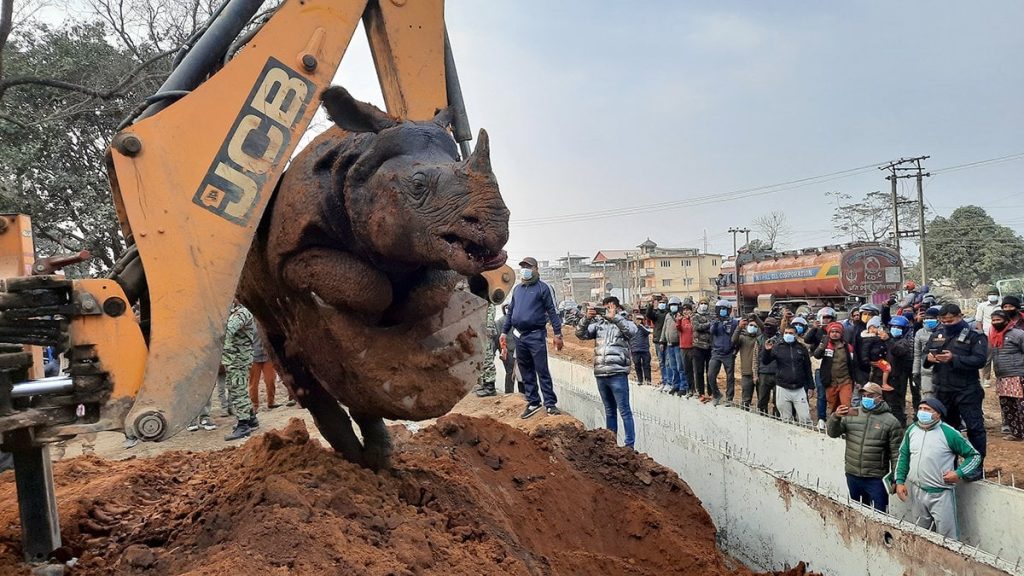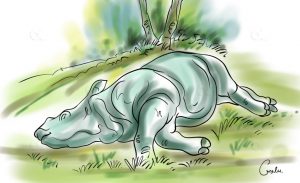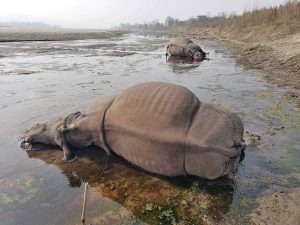A one-horned rhinoceros died after it fell into an under-construction roadside ditch in the Bharandabhar corridor of the Chitwan National Park earlier this week.
On March 28, 2021, an autorickshaw collided with a tiger on the Postal Highway in Thori, Chitwan. Because the driver fled after the accident, the injured tiger was left unattended. Last year, a 10-year-old female tiger died after it got hit by a car in the forest of Jitpur Simara sub-metropolitan city-1 in Bara.
Every year, a large number of wild animals die due to road accidents and fall prey to development structures. In the fiscal year 2019/20, the Department of National Parks and Wildlife Conservation attributed 108 wildlife deaths due to road accidents whereas the number was 130 in the next year. As many as 43 wild animals were killed in road accidents in and around the Banke National Park alone. Experts and stakeholders say a lack of friendly infrastructure on the road has contributed to increasing wildlife deaths in Nepal.
The cost of haphazard development
In recent years, road accidents involving wildlife have increased, mainly on the highways that go through dense forests of the national parks in Terai. Such roads are not wildlife-friendly leading to multiple accidents and several wildlife deaths.
According to Haribhadra Acharya, the chief conservation officer of the Chitwan National Park, the rhino died earlier this week while the road widening project was going on recklessly. He informs the park has written a letter to the Road Division Office, Chitwan, complaining that the work was done without any preliminary environmental impact assessment. It was done without permission to cut down trees or pay attention to wildlife safety.
The recent rampant infrastructural development is happening without paying attention to crossing or any other aspects of wildlife habitat and their biological route in course of natural migration. Due to such reasons, experts say, the infrastructures built for the convenience of human beings are becoming a ‘trap’ for wildlife.
Animal rights activists say the attention should shift to constructing underpasses and overpasses around the roads for wildlife to walk so that the number of wildlife deaths could decrease.
According to the Department of National Parks and Wildlife Conservation (DNPWC), out of the 1,028 kilometres of the East-West Highway, 200 kilometres fall within the areas of the national parks. Banke National Park has 100 kilometres of highway whereas 30 kilometres lie in Bardiya National Park, 20 in Parsa, eight in Shuklaphanta National Park and five in Chitwan. Dozens of wildlife deaths happen on the roads in these areas every year.
The same problem exists along with strategic road networks and rural roads including in mid-hilly areas, postal roads, Madan Bhandari Highway, and north-south corridor highways. In addition, the major wildlife habitats also fall in these areas. Despite that, a study has not been conducted to get the exact number.
Easy way out
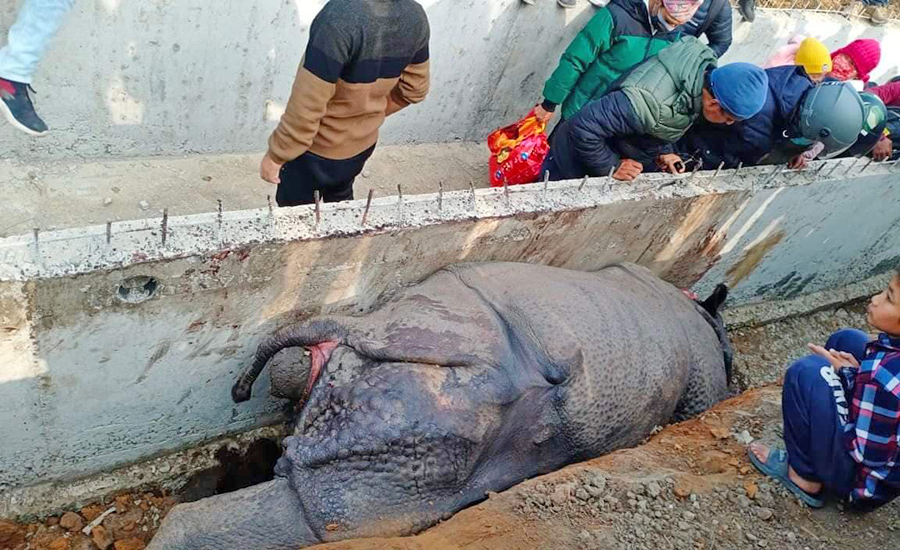
Highway construction often takes the forest route to avoid land compensation disputes. For the same reason, the number of unpaved roads turning concrete has also increased.
This has resulted in increased wildlife deaths, says the World Wildlife Fund Nepal. On the other hand, the people who are using the roads within the speed limit of the national parks are also at the risk of getting attacked by the wildlife.
The government is failing in all aspects from paying attention to caution during construction to making the infrastructure wildlife-friendly.
Conservationists say the real number of wildlife deaths is even higher as the number of wild animals that have died in the forest areas after being injured in a road accident has not been counted. Meanwhile, they also say that all recorded wildlife deaths cannot be categorised as road accidents.
Not only vehicle hits but the infrastructure like canals, power transmission lines etc also cause wildlife deaths. Other than that wildlife searching for food and water have been more prone to accidents. A WWF study shows accidents are more common during the winter.
There are underpasses constructed at four places of Ramnagar and Aptari along the Muglin-Narayangadh road section in Chitwan. For the first time in Nepal, underpasses have been built so that possible wildlife deaths could be averted.
Responsible actions essential
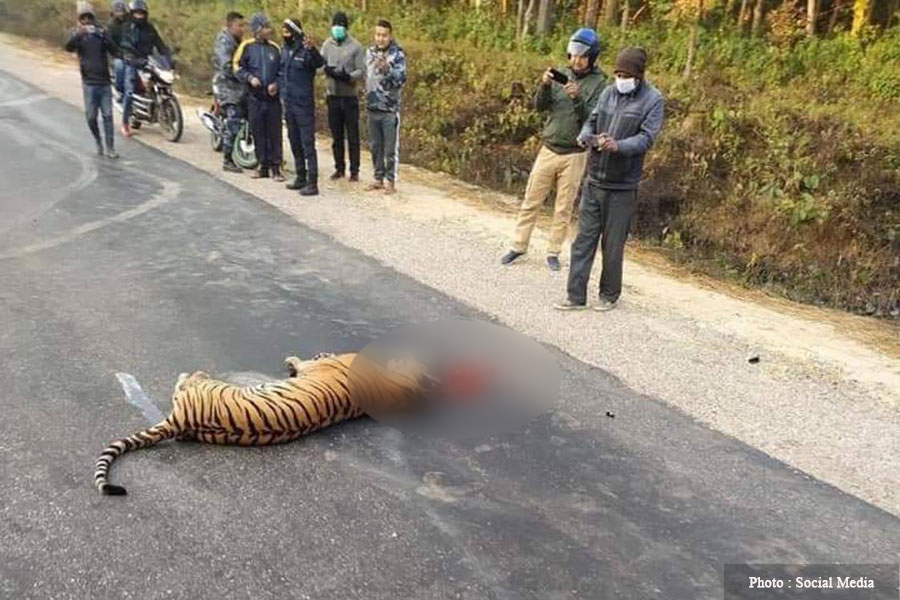
Conservationists say it is the responsibility of the development agencies to ensure that the wildlife movement within the parks, reserves and forests is not obstructed and they would not cause any wildlife deaths. For this, they need the construction of roads, railways, transmission lines, hydropower projects, gas and drinking water pipelines, river embankments, and canals in a wildlife-friendly way.
Ideally, during any infrastructure project, the concerned needs to focus on the conservation of protected and endangered species, reduce human-wildlife conflict and not disturb the ecosystem.
However, rampant development has affected wildlife very much. So far, the Department of Roads has not determined what kind of infrastructure is to be constructed in the sensitive areas including forests, parks and conservation areas so that the number of wildlife deaths could go down.
WWF scientist Dr Gokarna Jung Thapa stresses there is a need for crossings such as underpasses and overpasses for the welfare of the wildlife. It will also be crucial to prevent the old wildlife turned maneaters from entering human settlements.
“Dense forests have been penetrated by various infrastructures, disrupting the natural movement of wildlife and putting wildlife at risk. Additionally, it is hindering their genetic development and future generations,” says Thapa.
Lack of government response
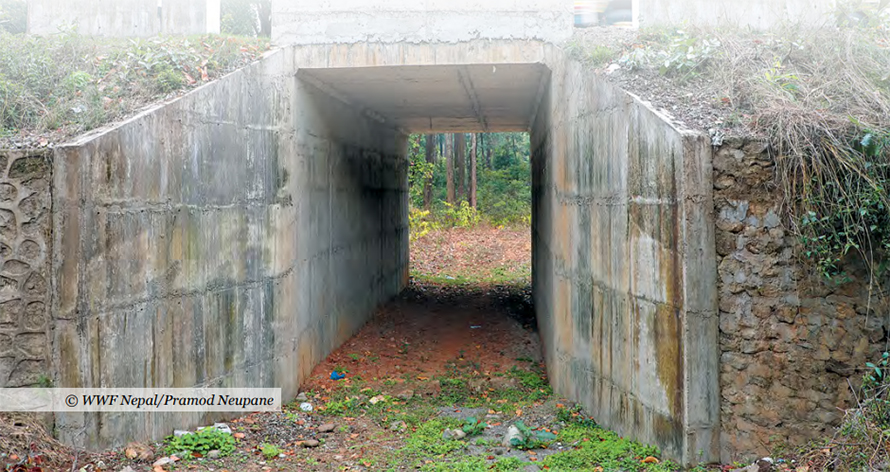
Despite the scores of recommendations, the government has not yet responded to them. It has already been five years that conservationists are pushing for such a guideline. But, the agenda has been limited to the department’s draft for the directive.
On the Kathmandu-Nijgadh expressway and Narayangarh-Butwal road expansion, there are some (over and under) passes for wildlife being constructed. However, the road department does not have any immediate plan to install crossings on already-constructed roads. Even while re/levelling the roads, there is no plan to construct underpasses for animals.
The department’s spokesperson Shiva Prasad Nepal says it has been only a couple of years that there has been a positive debate over the topic.
“We do not have enough data and skilled human resources on wildlife deaths. With the sensitive issues being debated now, it seems necessary to make efforts to make the future infrastructure wildlife-friendly with more studies and regular discussions,” he says, adding that it will require a united effort.
The department is hopeful the new road section from Kamala to Narayangadh via Pathalaiya along the East-West Highway will include the required number of passes for the wildlife.



